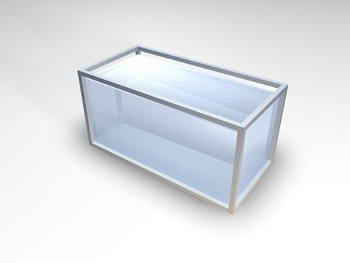

Once you've determined the volume of your tank and the basic dimensions you have room for, you'll need to fine tune your decision by considering the surface area of the tank's water.
The greatest exchange of carbon dioxide and oxygen occurs at the surface. Therefore, a tall, narrow tank with a small surface area would have less gaseous exchange than would a shallow, wide tank of similar volume.
The popular 55-gallon rectangular tank is just as tall and long as a 75-gallon rectangular tank, but the latter is a paltry six inches wider, which provides not only more surface area, but a greater ratio of surface area-to-volume. A superior safety buffer, either way you look at it.
| Gallons | Length | Width | Surface Area | Ratio of Surface Area to Gallons |
|---|---|---|---|---|
| 55 | 48" | 12" | 576 sq. in. | 10.47 |
| 75 | 48" | 18" | 864 sq. in. | 11.52* |
Another popular choice is the 25-gallon tank vs. the 29-gallon tank. Again, for just six more inches, the extra four gallons and larger surface area-to-volume provides a more trustworthy environment for your fish.
| Gallons | Length | Width | Surface Area | Ratio of Surface Area to Gallons |
|---|---|---|---|---|
| 25 | 24" | 12" | 288 sq. in. | 11.52 |
| 29 | 30" | 12" | 360 sq. in. | 12.41* |
A word of caution: not all tanks of equal volume are sized identically. Some rectangular tanks are suffixed with terms such as "High", "X-High", and "Breeder" that have variations in measurements.
For non-rectangular tanks, be prepared to crunch the numbers, unless your dealer can provide them for you. But you'll most likely come out ahead with a rectangular tank for greater surface area, lower price, and ease of finding fixtures that fit properly.